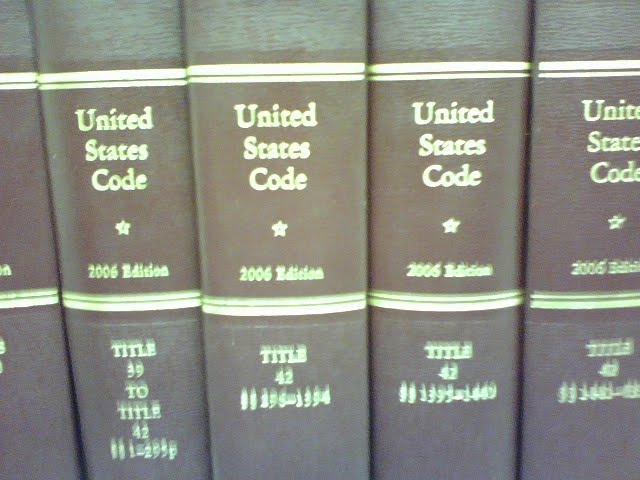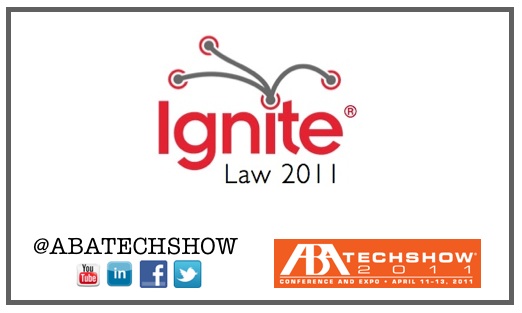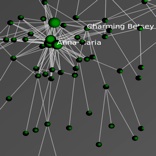UPDATED SLIDES – Midwest Law & Econ Association – Indiana Law – Sept 2011
I realize that Wordles are not among the most scientific things on the planet (see Drew Conway’s post on this point over at ZIA). However, I just thought I would play around with President Obama’s speech on the budget delivered today at George Washington University. See above …
Cross Post from Michael Bommarito’s Blog – “ Last week, I mentioned that I am excited to give a keynote in two weeks on Law and Computation at the University of Houston Law Center alongside Stephen Wolfram, Carl Malamud, Seth Chandler, and my buddy Dan Katz from here at the CLS Blog. The first part in my blog series leading up to this talk will focus on indexing and searching the U.S. Code with structured, public domain data and open source software.
Last week, I mentioned that I am excited to give a keynote in two weeks on Law and Computation at the University of Houston Law Center alongside Stephen Wolfram, Carl Malamud, Seth Chandler, and my buddy Dan Katz from here at the CLS Blog. The first part in my blog series leading up to this talk will focus on indexing and searching the U.S. Code with structured, public domain data and open source software.
Before diving into the technical aspects, I thought it would be useful to provide some background on what the U.S. Code is and why it exists. Let’s start with an example – the Dodd-Frank Wall Street Reform and Consumer Protection Act. After the final version of HR 4173 was passed by both houses and enrolled in July of 2010, it received a new identifier, Public Law 111-230. This public law, along with private laws, resolutions, amendments, and proclamations, is published in order of enactment in the Statutes at Large. The Statutes at Large is therefore a compilation of all these sources of law dating back to the Declaration of Independence itself, and as such, is the authoritative source of statutory law.
If we think about the organization and contents of the Statutes at Large, it quickly becomes clear why the Code exists. The basic task of a legal practitioner is to determine what the state of law is with respect to a given set of facts at a certain time, typically now. Let’s return to the Dodd-Frank example above. Let’s say we’re in the compliance department at a financial institution and we’d like to know how the new proprietary trading rules affect us. To do this, we might perform the following tasks:
However, the Statutes at Large is not well-suited to these tasks.
Based on our goal and these properties of the Statutes, we need to perform an exhaustive search every time we have a new question. This is pretty clearly bad if we want to get anything done (but hey, maybe you’re not in-house and you bill by the hour). So what might we do to re-organize the Statutes to make it easier for us to use the law?
A systematic organization of the Statutes at Large that followed these rules would make our lives significantly easier. We could search for concepts and use the hierarchical context of these results to navigate related ideas. We could rest assured that the material we read was near-comprehensive and current. Furthermore, we could communicate more succintly by referencing a small number of organized sections instead of hundreds of Public Laws.
As you might have guessed, this organizational scheme defines the United States Code as produced by the Office of the Law Revision Counsel. While the LRC traditionally distributes copies of the Code as ASCII files on CD-ROMs, they recently began distributing copies of the code in XHTML. We’ll be using these copies to build our index, so if you’d like to follow along, you should download them from here – http://uscode.house.gov/xhtml/.
If we’d like to build a legal search engine, the Code is arguably the best place to start. While there are other important statutory and judicial sources like the Code of Federal Regulations or the Federal Reporter, the Code is as close to capital-L Law as it gets.
 In this part of the post series, I’m going to build an index of the text of the Code from the 2009 and 2010 LRC snapshots. To do this, we’ll use the excellent Apache Lucene library for Java. Lucene is, in their own words, a “a high-performance, full-featured text search engine library written entirely in Java.” As we’ll see in later posts, Lucene (with its sister project, Solr) is a very easy and powerful tool to develop fast, web-based search interfaces. Before we dive into the code below the break, let’s take a look at what we’re working towards. Below is a search for the term “swap” across the entire Code. We’re displaying the top five results, and these were produced in a little over a second on my laptop. “
In this part of the post series, I’m going to build an index of the text of the Code from the 2009 and 2010 LRC snapshots. To do this, we’ll use the excellent Apache Lucene library for Java. Lucene is, in their own words, a “a high-performance, full-featured text search engine library written entirely in Java.” As we’ll see in later posts, Lucene (with its sister project, Solr) is a very easy and powerful tool to develop fast, web-based search interfaces. Before we dive into the code below the break, let’s take a look at what we’re working towards. Below is a search for the term “swap” across the entire Code. We’re displaying the top five results, and these were produced in a little over a second on my laptop. “
To view the images, click over to Michael Bommarito’s Blog (click here for direct access). Additional technical specifications and code are also available.
 On the eve the ABA Tech Show, I am looking forward to attending Ignite Law 2011 @ The Chicago Hilton. For those not familiar, Ignite offers a unique style of presentation (6 minutes total with automatically advancing slides). For a certain class of ideas, Ignite offers thefmaximal information compression approach to concept introduction. Anyway, the topics of the talks interesting.
On the eve the ABA Tech Show, I am looking forward to attending Ignite Law 2011 @ The Chicago Hilton. For those not familiar, Ignite offers a unique style of presentation (6 minutes total with automatically advancing slides). For a certain class of ideas, Ignite offers thefmaximal information compression approach to concept introduction. Anyway, the topics of the talks interesting.
Tomorrow, I will be attending some of the sessions at the Tech Show. If anyone is attending the conference and would like to touchbase, feel free to ping me.
Today, I am traveling to Kansas for The Patent Conference (aka Pat Con). Tomorrow, I will be presenting our methods paper Distance Measure for Dynamic Citation Networks (published in the Statistical Mechanics Journal – Physica A in October 2010). While the specific applied example in paper is focused on case-to-case legal citations, the formalization and method we present therein has general form applicability to all dynamic direct acyclic graphs (including the patent citation network). Thus, we are interested in discussing how to leverage our approach to better understand the path of innovation that is revealed in datasets such as the NBER patent dataset.
The visualization above is something we are calling the “six degrees” of Marbury v. Madison. It was originally produced for use in our paper Distance Measures for Dynamic Citation Networks. Due to space considerations, we ended up leaving it on the cutting room floor. However, the visual is designed to highlight the idea of a “sink.”
Sinks are one of the core concepts which we outline in Distance Measures for Dynamic Citation Networks, 389 Physica A 4201 (October 1 2010). Looking through the prism of a citation network, sinks are the root to which a given legal concept, academic idea or patent based innovation can be drawn. From each citation in a non-sink node, it is possible to trace the chains of citations back to their root (which we call a sink). In the visualization above, the root or sink node is the famed United States Supreme Court decision Marbury v. Madison. Starting from the center and working out to the edge, the first ring are cases that directly cite Marbury v. Madison. The next ring are cases which cite cases that cite Marbury v. Madison. The next ring are cases which cite cases which cases that cite Marbury v. Madison and so on…
Anyway, one of the major contributions of our Distance Measures for Dynamic Citation Networks paper is that it allows us to use these sinks to create pairwise distance/similarity measure between the ith and jth unit. In this instance, the units in this directed acyclic network are the ith and jth decisions of the United States Supreme Court.
Now, it is important to note cases contain many citations and thus can be oriented relative to many different sinks. So, even if a case can be traced to the Marbury sink – this does not preclude it from being traced to other sinks as well. Also, it is possible to construct a variety of mathematical functions to characterize the sink based distance between units. For instance, the importance of a sink might decay as its shortest path length increases. An alternative measure might weight the importance of each sinks by the number of unique ancestors shared between nodes i and j that are descended from a given sink of interest. Indeed, many fine-grained choices are possible but they require justification drawn from the given substantive problem.
As mentioned above, this method has potential applications including tracing the spread of technological innovation in patent citations or the spread of ideas in a set of academic articles. However, given our primary interest surrounds the judicial citations, we are working on the follow up to the “sinks” paper. In this follow up paper, we hope to carry these and other ideas forward into a definitive community detection method for judicial citation networks.
To preview, at least two major dynamics must be considered in any null model for community detection. First, case-to-case citations can help contribute to the fractal nature of legal systems. In other words, we are pretty far from any sort of gaussian null model. However, this is easy enough to confront with an alternative null — some highly skewed distribution (i.e. power law or power law with a cutoff, etc.)
 Here is the difficult part — the cross fertilization of legal concepts. This is a time evolving network where ideas are referenced/imported from otherwise unrelated or previously unrelated domains. The examples of cross-fertilization are numerous. One of my personal favorite non-SCOTUS examples is the use of the tort doctrine of “trespass to chattels” in the context of web scraping.
Here is the difficult part — the cross fertilization of legal concepts. This is a time evolving network where ideas are referenced/imported from otherwise unrelated or previously unrelated domains. The examples of cross-fertilization are numerous. One of my personal favorite non-SCOTUS examples is the use of the tort doctrine of “trespass to chattels” in the context of web scraping.
Anyway, we hope to have more to come on the topic of SCOTUS community detection in the weeks and months to come. In the meantime, please check out a Dynamic 3D Hi Definition United States Supreme Court Visualization.
Kudos to Jerry Goldman, the other folks at the Oyez Project as well as the Chicago-Kent College of Law for making this free resource available to the public!
From the description: “OYEZTODAY at IIT Chicago-Kent College of Law offers you the latest information and media on the current business of the Supreme Court of the United States. OYEZTODAY provides: easy-to-grasp abstracts for every case granted review, timely and searchable audio of oral arguments + transcripts, and up-to-date summaries of the Court’s most recent decisions including the Court’s full opinions. You will have access to all this information on your iPhone with the ability to share reactions on Facebook, Twitter, or by email. (Recordings of opinion announcements from the bench will follow when the Court releases these files to the National Archives at the start of the Court’s next Term). Chicago-Kent is proud to provide this free service to enhance the public’s understanding of the Supreme Court and current legal controversies.”
From the abstract: “Complex social networks have received increasing attention from researchers. Recent work has focused on mechanisms that produce scale-free networks. We theoretically and empirically characterize the buyer–supplier network of the US economy and find that purely scale-free models have trouble matching key attributes of the network. We construct an alternative model that incorporates realistic features of firms’ buyer–supplier relationships and estimate the model’s parameters using microdata on firms’ self-reported customers. This alternative framework is better able to match the attributes of the actual economic network and aids in further understanding several important economic phenomena.”